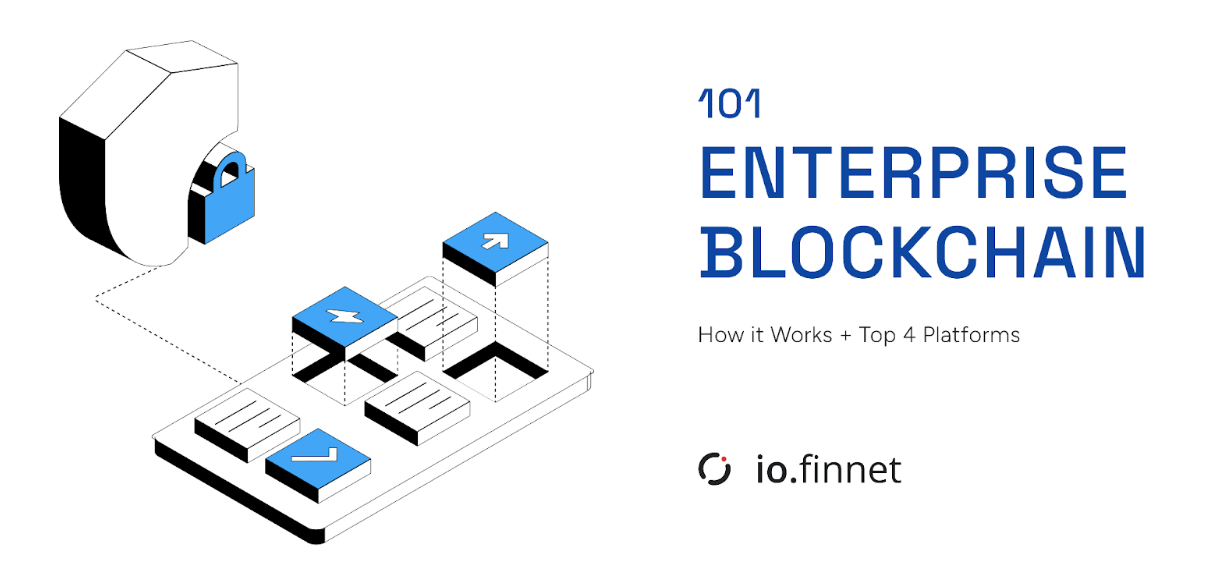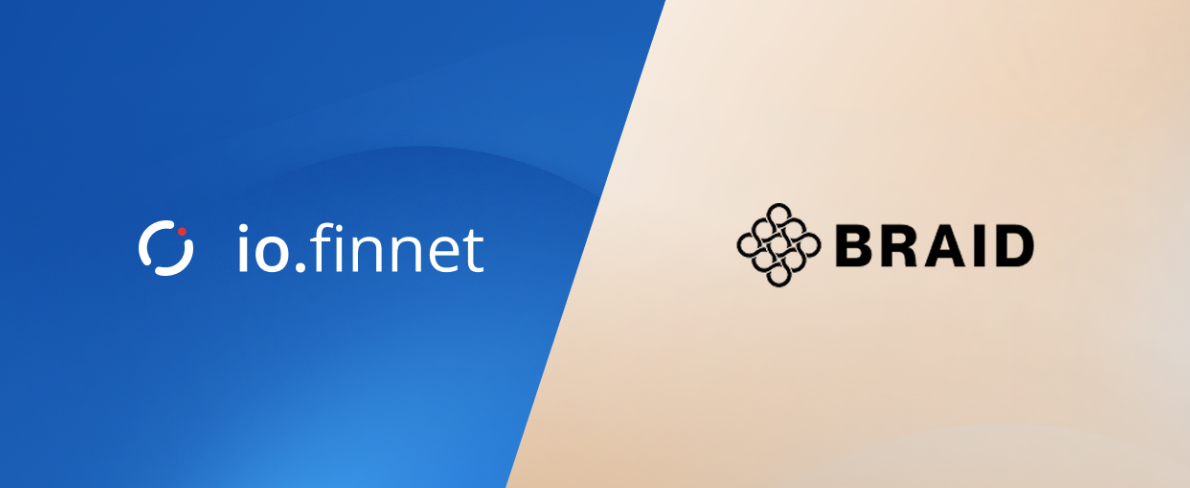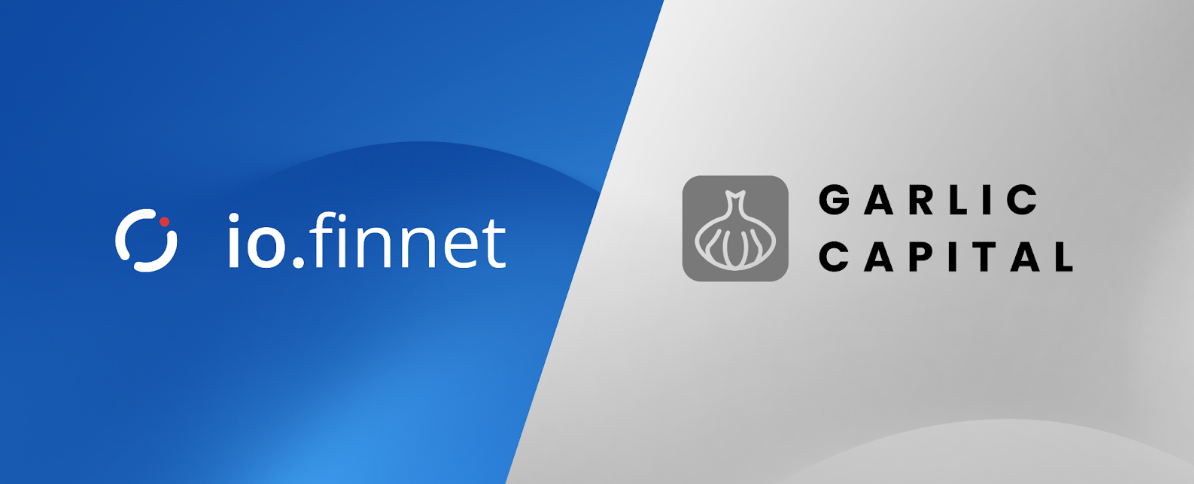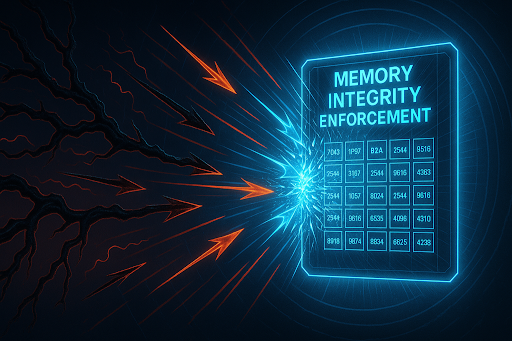LEARN
Enterprise Blockchain: How it Works + Top 4 Platforms
Enterprise blockchain is transforming the way businesses transact, share data, and build trust across multi-party networks like trade finance systems.
How does it work?
And which enterprise blockchain solutions should you explore?
In this article, you’ll learn everything about enterprise blockchain, including its key benefits and the top platforms to explore in 2025. We’ll also walk you through a self-custody solution that gives enterprises full control over their digital assets.

This Article Contains
- What Is Enterprise Blockchain?
- 5 Indispensable Benefits of Using Enterprise Blockchain
- 4 Leading Enterprise Blockchain Platforms to Explore in 2025
- io.finnet: A Secure Self-Custody Solution for Blockchain-Driven Enterprises
- 3 FAQs About Enterprise Blockchain
Enterprise blockchain is a type of blockchain network designed specifically for business environments.
Unlike public blockchains, which are open to everyone, enterprise blockchains are permissioned systems that restrict access to approved participants. These networks enable multiple companies or departments to securely share data, automate business processes with smart contracts, and maintain a single source of truth, all without relying on a central authority.
Enterprise blockchain is commonly used in industries like finance, supply chain, healthcare, and government. It helps improve transparency, traceability, and efficiency across organizational boundaries.
Next, we’ll check out the key advantages of this blockchain technology.
Here are the top reasons why you should consider enterprise blockchain technology in 2025:
- Improved Data Transparency: Enterprise blockchain provides a shared ledger where all authorized participants can access the same data in real time. This reduces disputes and eliminates data silos.
- Robust Security and Access Control: Enterprise blockchains use encryption and permissioned access to ensure that only authorized participants can view or modify data. This significantly reduces the risk of breaches, tampering, or fraud.
- Reduced Operational Costs: Enterprise blockchain cuts costs by reducing intermediaries and enabling private, rules-based automation through smart contracts. These processes run within a controlled network of trusted participants.
- Stronger Auditability and Compliance: Every transaction on an enterprise blockchain is immutably recorded and time-stamped, creating a permanent and tamper-proof audit trail. This makes it easier for businesses to track activity, demonstrate accountability, and meet regulatory compliance requirements.
- Faster and More Reliable Transactions: Enterprise blockchains streamline data exchange between participants. This reduces processing delays and improves transaction consistency.
Now, what are some of the top blockchain solutions you should check out?
With more businesses adopting blockchain technology, choosing the right platform is critical. To simplify your search, we’ve highlighted the most reliable and widely used enterprise blockchain solutions:
Hyperledger Fabric is an open-source, modular blockchain framework hosted by the Linux Foundation. It’s designed specifically for permissioned enterprise use and supports pluggable components like consensus algorithms.
This blockchain solution enables privacy through channel-based data isolation, making it ideal for business-critical applications.
Key Features:
- Modular architecture for flexibility and scalability
- Supports private channels and confidential transactions
- Strong identity and access control via certificate authorities
IBM Blockchain is a fully managed enterprise blockchain platform built on Hyperledger Fabric. It provides tools and infrastructure for businesses to build, govern, and scale secure blockchain networks.
The IBM blockchain platform focuses on use cases in supply chain, financial services, and healthcare.
Key Features of the IBM blockchain platform:
- End-to-end encryption and secure data sharing
- Intuitive tools for network governance and access control
- Integration with IBM Cloud and existing enterprise systems
Quorum is an enterprise-focused version of Ethereum, originally developed by J.P. Morgan and now maintained by ConsenSys. This blockchain solution supports smart contracts, privacy enhancements, and high-speed blockchain transactions on a permissioned network.
Quorum is often used in the financial services and asset management sectors, which both require Ethereum compatibility and enterprise-grade security.
Key Features:
- Private transaction support for confidential data sharing
- High throughput and low-latency performance
- Enterprise-grade permissioning and governance
Corda is a permissioned blockchain platform built for financial institutions and regulated industries.
Unlike traditional blockchains, this enterprise blockchain platform doesn’t broadcast transactions network-wide — it shares data only between relevant parties. This design makes it well-suited for sectors that require privacy, compliance, and interoperability.
Key Features:
- Point-to-point data sharing for enhanced privacy
- Optimized for regulated environments (e.g., banking, insurance)
- Uses verified identities and trusted parties to check and approve blockchain transactions
Okay, now you’re familiar with the top enterprise blockchain solutions… But how do you manage digital assets securely within those ecosystems?
That’s where a powerful self-custody solution like io.finnet comes in.
io.finnet offers two core solutions tailored for blockchain-native businesses and institutions:
- Self-Custody Solutions & DeFi Access: Advanced MPC-based security features that give businesses full control over their digital assets, without relying on custodians.
- 24/7 Instant Fiat Settlement Network: A real-time fiat payments infrastructure powered by private blockchain technology, enabling uninterrupted, cross-border financial operations.
Together, these solutions empower businesses with a seamless, secure alternative to traditional banking, while ensuring they remain in full control of both on-chain and off-chain operations.
io.finnet offers blockchain infrastructure and complements enterprise blockchain strategies by enabling secure digital asset management at scale.

What makes io.finnet so special?
It allows businesses to interact with both private and public blockchains while retaining full control over their assets, thanks to its Trustless Multi-Party Computation (tMPC) architecture. This makes it ideal for organizations issuing tokens, executing smart contracts, or managing on-chain credentials within enterprise blockchain environments.
Also, io.finnet empowers businesses to manage digital assets directly without relying on third-party digital asset custodians. It’s designed to serve a diverse client base, including OTCs, cryptocurrency exchanges, market makers, and funds.
Below are the key features and benefits of the io.finnet self-custody solution:
- Scalable Trustless Multi-Party Computation (tMPC): io.finnet is highly scalable and can be customized to fit any organization's needs, allowing the creation of unlimited vaults, signers, thresholds, and approver hierarchies to meet specific security requirements.
- Comprehensive Asset Support: Supports a wide range of digital assets, including Bitcoin, Ethereum, and various tokens, ensuring versatility for diverse portfolio management. Check out our full asset support list.
- Developer Integration and Automation Capabilities: Offers comprehensive APIs and SDKs that enable full automation of end-to-end business processes and integration with DeFi platforms, providing a robust environment for tech-savvy users and developers.
- Compliance and Policy Enforcement: Enables enforcement of internal policies for transfer instructions and validation, ensuring that no single employee can control all funds, thereby enhancing security.
- Regulatory Compliance: Designed to comply with essential regulatory requirements like KYC and AML, adding an extra layer of security and trust for users.
- Risk Screening/Transaction Simulation: This feature proactively screens for malicious activity during transaction orchestration, adding an extra layer of security to your operations. Powered by Blockaid.
- Web3 Access: Provides a unified interface to manage all your DeFi apps seamlessly, supporting both EVM and non-EVM chains through WalletConnect integration.
- Customizable Transaction Costs and Speeds: Offers a customizable gas fee feature that allows users to adjust transaction fees based on their needs, optimizing for cost or speed.
- Advanced Disaster Recovery: Provides options for trustless disaster recovery, allowing for immediate funds recovery without third-party interaction, using existing signers to issue a "reshare" to replace lost or compromised devices.
Keen to learn more about enterprise blockchain?
Let’s explore the answers to a few frequently asked questions:
1. What Are the Popular Use Cases and Applications of Enterprise Blockchain?
Here are some of the most powerful ways organizations are using this technology:
- Trade Finance: Blockchain simplifies trade by digitizing documents and using a smart contract to automate complex, multi-party transactions. Platforms like io.finnet enable banks and financial institutions to operate their own private blockchains, allowing them to tokenize fiat currency and settle transactions instantly — 24/7. This removes the limitations of traditional banking hours and makes it possible to exchange value securely and continuously, even outside standard operating times.
- Supply Chain Management: Enterprise blockchain solutions provide end-to-end visibility across suppliers, manufacturers, and distributors. They enable real-time tracking of goods, reduce fraud, and improve inventory accuracy.
- Healthcare Data Sharing: Blockchain ensures secure, permissioned access to patient data across providers and insurers. This improves coordination while maintaining privacy and data integrity.
- Real Estate and Asset Tokenization: Businesses can tokenize physical assets like real estate or machinery. This streamlines the process of transferring asset ownership and ensures transparent record-keeping.
2. What Does Enterprise Blockchain Development Involve?
Enterprise blockchain development involves building secure, scalable, and permissioned blockchain systems tailored to business needs.
Enterprise blockchain development services typically include blockchain application development, smart contract development, and integration with existing enterprise software.
When building enterprise-grade blockchain application solutions, companies often work with a specialized blockchain developer or blockchain development company that understands data privacy, regulatory requirements, and performance optimization.
3. What Are the Different Types of Blockchain Networks?
Blockchain networks fall into two broad categories: permissionless and permissioned. Let’s explore them in detail:
- Permissionless Blockchains: These are open networks where anyone can participate without approval. This type of blockchain implementation is fully decentralized and transparent, which means all users can read, write, and validate transactions.
Public blockchain is the standard model for permissionless networks, where anyone can join without restrictions.
- Public Blockchain: A public blockchain network relies on a consensus mechanism like Proof of Work. Examples of public blockchains include Ethereum, Bitcoin, and Binance Smart Chain (BSC).
- Permissioned Blockchains: These networks restrict access to approved participants. This type of blockchain implementation offers more control, privacy, and scalability, which makes it ideal for business or enterprise use.
Permissioned blockchains come in several forms, including private, consortium, and hybrid models.
- Private Blockchain: A private blockchain is controlled by a single organization. Access is restricted to authorized users, and the governing entity manages permissions and validation rules.
- Consortium Blockchain (Federated Blockchain): In a consortium blockchain, multiple organizations jointly manage the network. This type balances decentralization with controlled access and is often used for industry collaborations.
- Hybrid Blockchain (Semi-Private): Hybrid blockchains combine elements of both public and private blockchains. Some data is kept private for internal use, while other parts are public for transparency.
Unlock the Full Potential of Enterprise Blockchain With io.finnet
As we’ve explored, adopting enterprise blockchain technology is a smart move.
But how do you safely manage the assets within enterprise blockchain systems?
That’s where io.finnet comes into play.
It’s a powerful self-custody solution built for enterprises that interact with both public and private blockchains. With its Trustless Multi-Party Computation (tMPC) architecture, io.finnet gives you full control over your digital assets, whether you're issuing tokens, settling transactions around the clock, or managing on-chain credentials.
No intermediaries. No compromises. Just secure, scalable custody designed for the way modern enterprises operate.
Want to check it out?
Try io.finnet for free today and start securing your enterprise blockchain strategy hassle-free.


.svg)



